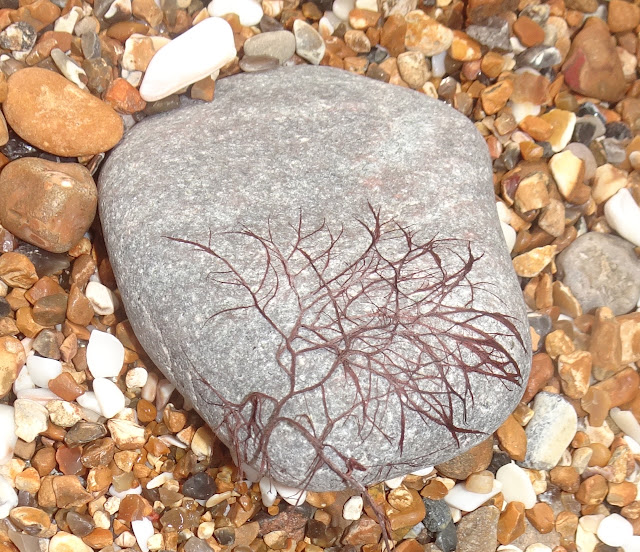It can now be revealed, publicly for the first time, that a remarkable discovery on Brighton Beach six months ago sparked an unprecedented global scientific investigation into what researchers are calling ‘neural sedimentary formations’ - naturally occurring stones displaying complex branching patterns that appear to encode structured information. The initial specimen, designated BRS-001 (Brighton Research Sample 001), was recovered from the characteristic flint pebble deposits that define this stretch of the English coastline.
The discovery - last December - occurred during routine geological surveys of Brighton’s distinctive pebble formations. Unlike typical flint deposits released from adjacent chalk cliffs through natural erosion, specimen BRS-001 exhibited unprecedented dendritic patterns resembling neural networks or vascular systems. The stone’s surface displayed intricate branching formations with mathematical precision suggesting fractal geometry, similar to patterns observed in natural phenomena such as Lichtenberg figures and biological structures.
Dr. Sarah K. Morrison, lead researcher at the Institute for Anomalous Geology, noted that while fractal patterns occur naturally in various forms - from plant leaf veins to coastal lines - the regularity and apparent information density of BRS-001’s patterns exceeded all known natural formations. Preliminary electromagnetic analysis revealed unusual crystalline matrices within the stone’s flint composition, suggesting possible piezoelectric properties that could theoretically store and transmit data.
Sophisticated imaging techniques revealed that the branching patterns extend throughout the stone’s interior in three-dimensional networks. Unlike surface Lichtenberg figures that form during electrical discharge events, these formations appear to be integral to the stone’s formation process. Spectroscopic analysis identified trace elements not typically found in Brighton’s geological composition, including rare earth metals arranged in geometrically precise configurations.The breakthrough came when researchers applied quantum resonance scanning to the specimen. The branching patterns began exhibiting coherent electromagnetic signatures, suggesting active information processing capabilities. Computer modelling indicated that the stone’s internal structure could theoretically store approximately 2.3 petabytes of data - far exceeding current human storage technologies.
Following private publication of preliminary findings, the Global Anomalous Materials Consortium launched Operation Neural Stone, a worldwide search for similar specimens. Research teams were deployed to coastal regions across six continents, focusing on areas with comparable geological characteristics to Brighton Beach’s flint-chalk formations.
Within the last six months, thirty-seven similar specimens have been recovered from locations including the Normandy coast, Tasmania’s eastern shores, and Nova Scotia’s Bay of Fundy. Each stone displayed unique branching patterns while maintaining consistent internal crystalline structures, suggesting a common formation mechanism operating across geological timescales.
The discovery has revolutionised understanding of natural information storage systems and raised profound questions about the origins of complex pattern formation in geological processes. Current research focuses on determining whether these formations represent an unknown natural phenomenon or evidence of technological intervention by unknown entities.
The scientific community remains divided on the stones’ origins, but all agree that it is time to reveal the astounding discoveries to the general public: BRS-001 and its global counterparts represent one of the most significant geological discoveries of the modern era, potentially reshaping our understanding of information theory, crystalline physics, and planetary formation processes.

.jpeg)
No comments:
Post a Comment